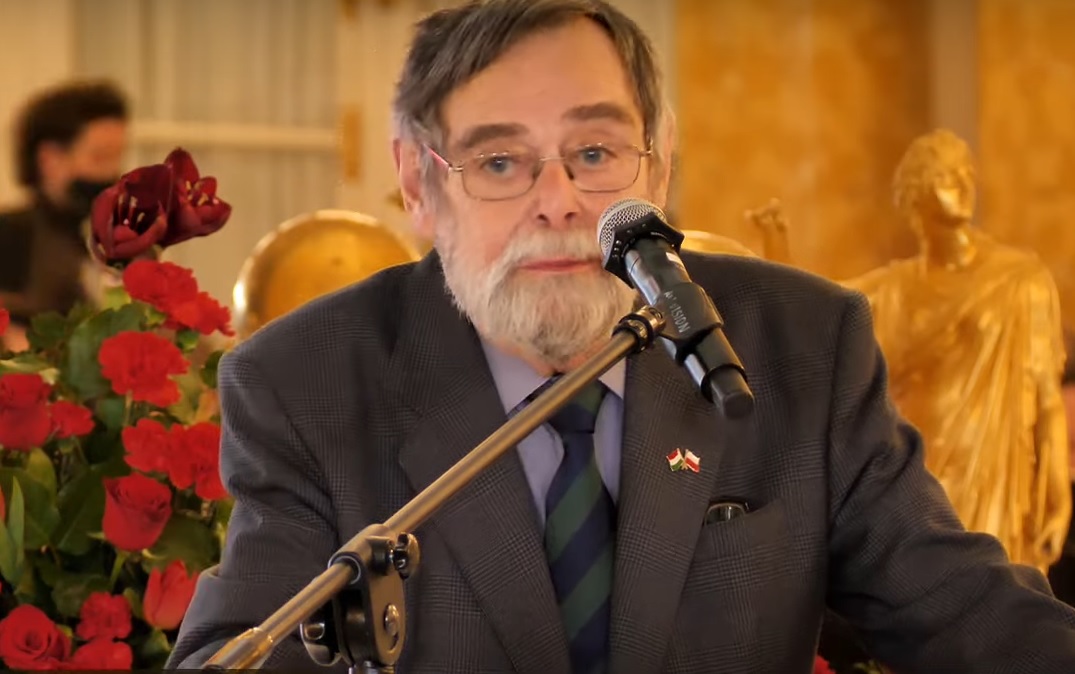Who is the Pontifex?

The bridge to Russia that is being built in the German imagination does not run over a precipice or over a rushing river, but over the historic home of several or even a dozen European nations.
Andrzej Nowak
The title question does not concern the matter of the office of Pope Francis, who, by the way, has recently declared his willingness to firmly maintain the reins of power as pontifex maximus and is not going into any retirement. A great priest is, in its root, a bridge builder. I heard this beautiful term recently at a conference in Berlin, brilliantly organized by the European Network for Remembrance and Solidarity, which has been working for years to commemorate the 20th-century history of European nations and states. The conference was devoted to the “politics of memory as a weapon” – from the perspective of Russian aggression against Ukraine. At symposiums in Germany that I have attended in recent years, Poland has not infrequently been placed in the role of a “whipping boy” for its eternal sins of “nationalism,” “violation of the rule of law,” and “Russophobia.” That was not the case this time. The prevailing feeling was that it was Poland and other countries in our region, such as Lithuania, Latvia, and Ukraine, that were right in recognizing the real threat of Moscow’s imperial policies.
The German hosts, and there were quite a few politicians among them (rather from the Greens and the FDP, i.e., the parties in the current government coalition, but rather critical of the essentially pro-Russian line that the SPD chancellor has held for so long) and journalists from influential newspapers, applauded vigorously when the conference’s first speaker, a professor of Ukrainian history from the University of Frankfurt, Andriy Portnov, bluntly criticized the fixation of the German imagination on Russia alone, as if no one else east of Germany existed. At one point, however, a German journalist moderating one of the panels did not hold back. She recalled Germany’s constant selfless, noble aspiration, which stems from its position on the map of our continent: the aspiration to build bridges between Europe and Russia, that is, between Germany and Russia. With the eyes of a wounded doe, she asked the rhetorical question, “And what is wrong with building bridges?” I took the liberty of answering: if you are building a bridge between Germany and Russia, perhaps you should also consult the matter with the people who live underneath this bridge – specifically all those Poles, Lithuanians, Ukrainians, Latvians…
The bridge to Russia that is being built in the German imagination (and also quite realistically – in the form of more Schröder-Putin pipelines) does not run over a precipice or over a rushing river, but over the historic home of several or even a dozen European nations. Chancellor Merkel consistently used, as did most of the German press, the term “Russia, our largest neighbor to the east,” as if forgetting that Germany has not been adjacent to Russia at any point on the map since 1945. The Chancellor proudly kept a portrait of Catherine II on her desk – as a model of a woman, an effective “politician,” to top it off, a German woman who could symbolize most perfectly these German-Russian “bridges.” And, yes, it was Catherine who, with her decision to partition the Polish-Lithuanian state in partnership with her two German partners, indeed shortened this “bridge” to a direct border crossing between Russia and Prussia. But there is no such crossing anymore. Ukraine has now reminded us, with its stiff resistance to the attempt to militarily impose Moscow rule on it, that there are, however, other states and peoples here who do not want their fate decided above their heads.
As I wrote in a previous column for Do Rzeczy weekly, on the Russian side, of course, the desire to “build bridges” towards Berlin and even further – to Paris, as long as they avoid asking the opinion of the representatives of those nasty Eastern European “ethnocracies” is not extinguished. After the temporary breakdown of cooperation in the erection of these bridges, will the time come for “pontifexes” who want to instruct us, the people from under the bridge, again from the height of their beautiful building? It depends: on the attitude of the Ukrainians at the front, on America – whether it will want to continue to invest its potential in building the Intermarium, but it also depends on us. Will we be ready to speak with our own voice or will we only repeat the issues dictated to us by the priests of the new wonderful world from Berlin, Brussels, Paris or – also – from Washington.
The fact that it is worthwhile to speak with one’s voice could be seen at the place where the aforementioned conference was held: it is the Museum/Center for Documentation of Displacement, Expulsion and Consent, which opened last year. That’s the name of the institution that Erika Steinbach dreamed up 20 years ago as a center of resentment against Poles above all, as well as Czechs, for the fate of Germans expelled from Eastern Europe after Hitler’s defeat. Years of Polish protests, persistent demands to take into account the essential context of these expulsions, that is, German aggression and crimes during World War II, have had an effect. I think that Mrs. Steinbach would be very unhappy with the shape of the exhibition of this museum. The Polish visitor – at least the undersigned finds no reason to protest here in the name of historical truth. The voice of the people from under the bridge has been heard.
This article was published in February 2023 in “Do Rzeczy” weekly.




